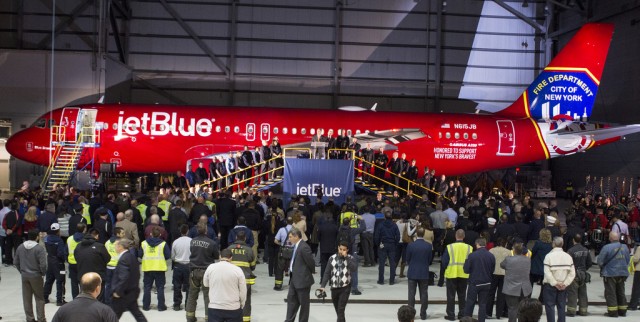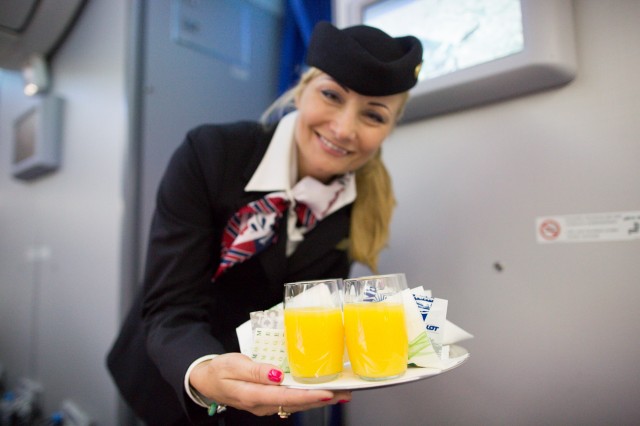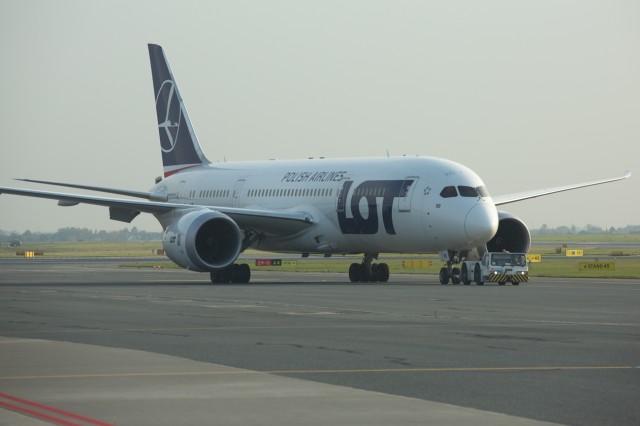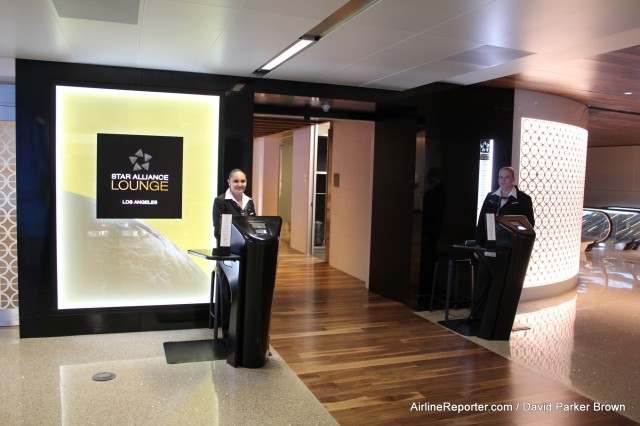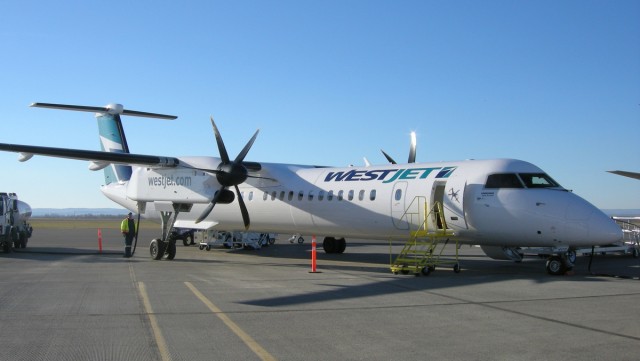
Westjet Encore Bombardier Q400 C-FENY at North Peace Regional Airport (YXJ) in Ft. St. John BC, under a beautiful blue sky. Photo: Howard Slutsken | AirlineReporter.com
This was going to be a great day for AirlineReporter.com’s Canadian “Senior Contributor.” That would be me!
I was flying with a new Canadian airline in a brand new Canadian-built plane, traveling from a major Canadian airport over some stunning Canadian landscape, and visiting the headquarters of one of “Canada’s 10 Most Admired Corporate Cultures,” which happens to be a major Canadian airline. The Flight Attendants might have made it even more Canadian by greeting me at the plane’s door with a Timmy’s “Double-Double” and a hockey stick. That didn’t happen.
Translation? I’m flying with WestJet Encore on a Bombardier Q400 from Vancouver (YVR) over the Canadian Coast Range and Rocky Mountains, and visiting Westjet’s base in Calgary (YYC). I’ll leave it to you to find out about Timmy’s.
WestJet Encore began flying in late June with two 78-seat Bombardier Q400 NextGen turboprops. Since then, five of their initial order of 20 Q400s have been delivered, and they have options on another 25 planes. WestJet Encore augments WestJet’s Boeing 737-based route structure with regional flights of distances up to 700 miles. That’s about a two hour flight time for the Q400, but most destinations are 60 to 90 minutes apart. Having the Q400 in the fleet will give WestJet the flexibility to fly to new destinations, add additional frequencies to current destinations, or “right size” the service throughout their network by swapping 737s with Q400s. The Q400s are pretty quick, with flight times within 10-20 minutes of a 737 over these short distances.
The first destinations included Nanaimo, BC in the west, and as far east as Saskatoon, SK. As more planes come into the fleet, Encore is adding destinations and continuing their expansion eastwards. Encore brought WestJet service back to Brandon, MB in September, a destination that previously couldn’t support WS 737 service. This YYC-YBR flight is currently Encore’s longest, at a bit under 2 hours. In addition to adding direct regional flights to the WestJet schedule, Encore will look to keep travellers “in the family” by providing connections to mainline WS flights, and those operated by codeshare partners. Encore is also part of the “WestJet Rewards” frequent-flier program, and shares facilities with WS at common destinations.
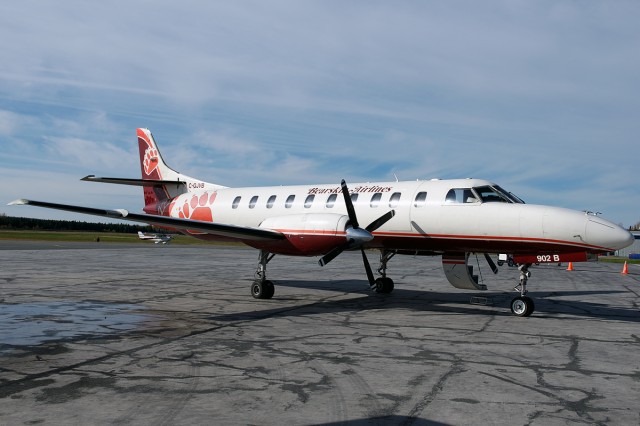
C-GBVY, the Bearskin Airlines Fairchild Metroliner 23 that I flew on. Photo – Bernie Leighton | AirlineReporter.com
This is a continuation of Day of the Turbine (Part 1): Flying on the Convair 580 & Day of the Turbine (Part 2): The Original King Air
The Swearingen Merlin began in a manner akin to the Pacific Airmotive Tradewind. It existed to answer the question, “how can we modernize a Beech piston twin?” By the time Ed Swearingen and his partners had finished their modifications, the aircraft had slowly evolved into its own turbine-powered type. As far as executive aircraft went, the Merlin was relatively popular. It was produced at the Swearingen plant in San Antonio from 1965 until 1998.
The Metroliner came to be as a stretch of the Merlin. It was equipped with the same inverted Garret AiResearch TPE331s, but lengthened to accommodate up to nineteen passengers. Fairchild purchased Swearingen, but continued the Metroliner and Merlin brands. Indeed, they kept production of the Metroliner going until 2001.
C-GJVB, a Metroliner 23, was built in 1998 and I set to take a flight in the classic airliner.
Story & Photos by Jeremy Dwyer-Lindgren – A joint venture between Airchive & AirlineReporter.com
LOT Polish has not exactly been living on easy street over the past few years. The carrier has faced intense competition from deeply entrenched regional full service carriers such as Lufthansa and Air France that have made the effects of the global recession all the more severe. Below the surface the carrier has been shedding routes left and right since 2010 in a bid to increase profitability. The carrier has also been courting partners since 2012 to convince one to buy a major stake in the airline.
But worst of all, the carrier bet the farm on the controversial Boeing 787 Dreamliner for its long-haul operations. Originally intended to help create one of the youngest and most advanced fleets in Europe, the move instead left the Warsaw-based airline with a bunch of expensive pieces of flying plastic when the type was grounded worldwide in January.
Having already sold off all but one of their Boeing 767s by the time of the grounding, the carrier was left up a big creek with a very small paddle. With long-haul operations effectively crippled the carrier hemorrhaged cash to the tune of $50,000 per day for months on end, eventually ending up broke earlier this year. LOT has been taking government loans consistently ever since, and has already admitted that if Boeing doesn’t compensate them for the loss in revenue they are already looking at dire financial straits for 2014.
It is against that backdrop that Airchive was invited by LOT Polish on a roundtrip from New York JFK to Warsaw.
The Flight
Terminal one at New York’s JFK Airport isn’t exactly the airports crowning jewel, but it’s hardly the worst of the bunch either. LOT Polish’s check-in desks are located just below and to the left of the AirTrain entrance, making it an easy find. Premium economy passengers have the option to check in for the flight in at the business class desk, where a friendly LOT employee made check-in quick and easy.
Despite having a fast track security status it took almost thirty minutes to wind through the lanes. Obviously not LOTs fault, but the coach lanes moved faster. Post-security, premium economy passengers can enjoy the Lufthansa lounge at JFK’s Terminal One: this was not clear to us however, and we missed it.
Continue reading In-Flight Review: LOT Polish 787 Premium Club on Airchive.com
Recently, I had the opportunity to check out the new Star Alliance lounge located in the Tom Bradley International Terminal at LAX. The old lounge wasn’t terribly bad, but it was ready for some upgrades. I was very excited about what I found in the new lounge.
To describe the feeling of the new lounge in one word: Home. It has different areas that each have their own energy, but all come back to being very home-like. Well, it’s a higher-end feeling than my home, but still it feels like it was meant for be lived in, rather than just looked at or enjoyed for a short amount of time.
